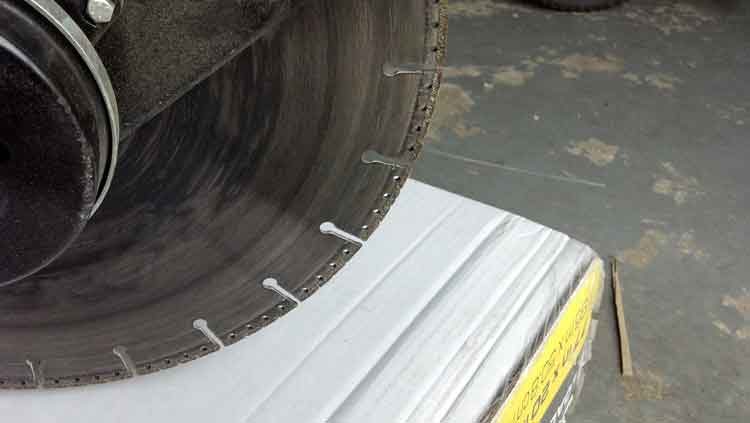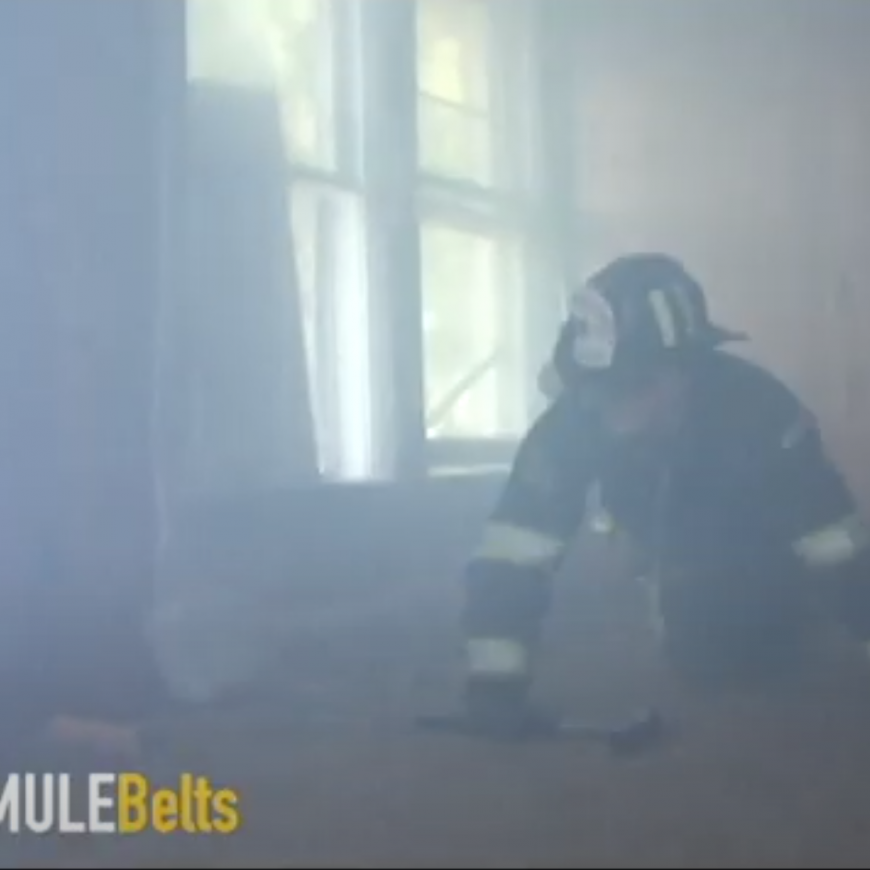Using the Rotary Saw Part 1
Photos and articles by Mark van der Feyst
A few of the functions of truck company operations require ventilation and forcing openings within a structure. Firefighters sometimes employ the rotary saw for these tasks. Some fire departments will have rotary saws on their apparatus to complement equipment needed to ventilate buildings and force open the building. The rotary saw offers many benefits, such as portability and power. Originally designed for the construction industry, the rotary saw has found its way into the fire service as a valuable tool.
The rotary saw is portable. It is meant to be carried anywhere on the fireground, including the roof of a building and up and down ladders, both ground and aerial. The weight of a rotary saw without fuel should be between 20-35 lbs. One firefighter can carry the saw either using the handles or using a strap attached to the saw, the latter of which can be made from webbing or even a used seat belt. Having a strap will free the hands of the firefighter so that he or she can carry other needed tools or have both hands available for climbing a ladder. It is portable enough that it could be used in small spaces such as a trench for extrication purposes, providing there are no explosive gases present.
The rotary saw has power—all rotary saws are powered by an internal combustion engine. They have a two-stroke small gas engine providing the needed power. The small engines can range from 74-119 ccs in displacement, with horsepower ranging from 5-8hp. Because of this high power output, the saw will produce blade speeds from 4,700-5,400 rpms. This will allow the saw to cut through almost any type of material that the blade is designed and rated for. The blade size will also vary from 12-16 inches.
There are many different types of blades on the market that can be purchased, depending upon the need of the fire department. A multi-purpose blade with a diamond cutting edge is most common and is usually the most desirable. It offers a wide range of materials that can be cut with just one blade (photo 1). Small diamonds are embedded into the edge of the blade for an abrasive cutting surface. Over time and with constant usage, the edge of the blade can “gum” up with material that is being cut, which prevents the blade from cutting effectively. All that is required is to bury the blade while it is running into new or clean material momentarily for about 20 seconds to clean the cutting edge. Once done, the blade can then be re-applied to the previous cutting operation and you will see a noticeable change in the cutting effectiveness.



